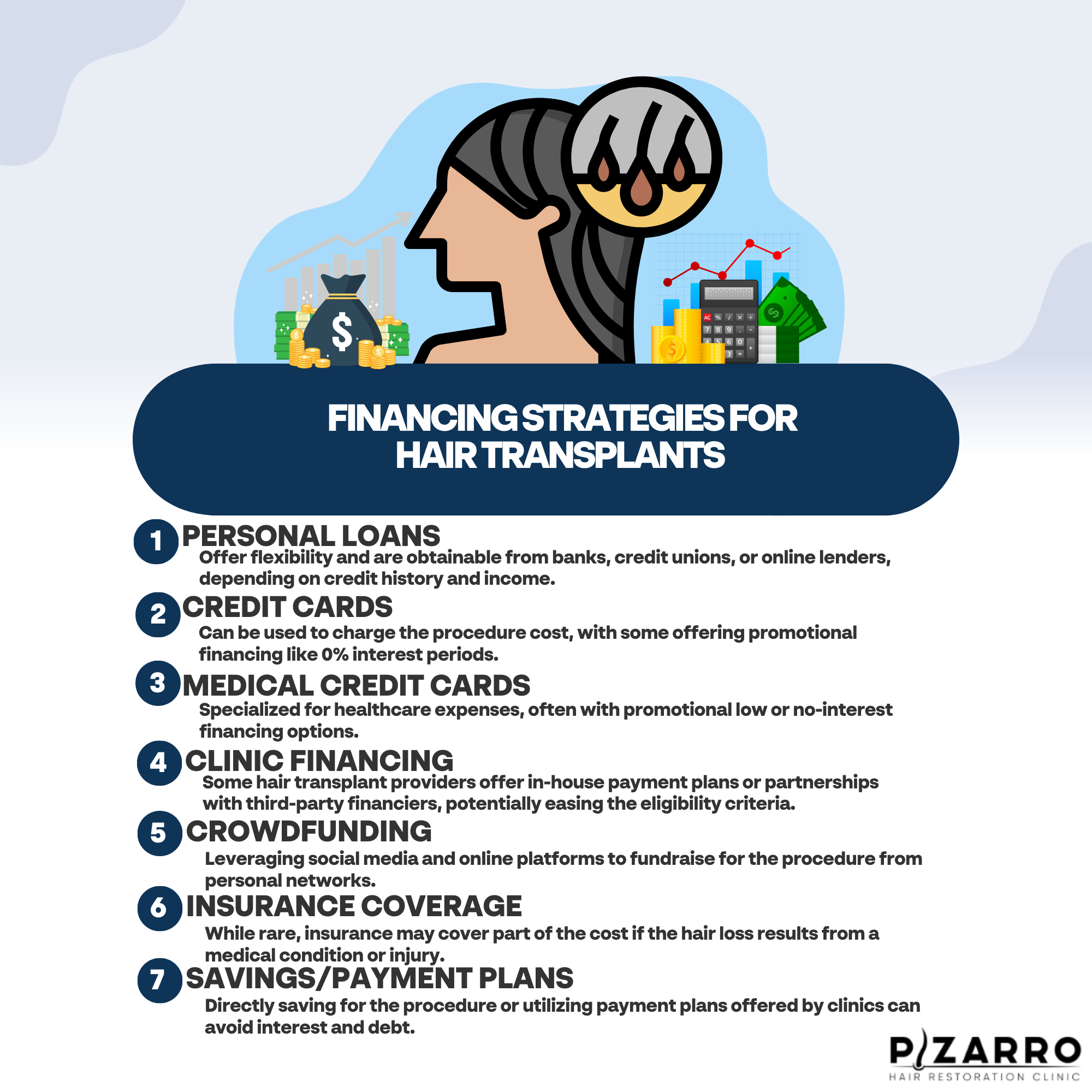When dealing with hair loss, one of the most effective solutions is a hair transplant. This procedure can restore your hair and confidence, giving you a new lease on life. However, like any medical procedure, hair transplants can be costly, and not everyone can afford them upfront. That’s where hair transplant financing comes in. In this article, we’ll explore various financing strategies you can consider to make your dream of having a full head of hair a reality.
Before we dive into the different financing options, let’s first understand what a hair transplant is and how it works.
What is a hair transplant?
It is a procedure carried out through surgery. Hair follicles are removed from another area of the scalp and implanted into areas that have experienced hair loss. The transplanted hair follicles then grow naturally, resulting in new hair growth in the bald or thinning areas.
Now that we clearly understand what a hair transplant is, let’s explore the financing options available to you.
Financing for hair transplant
Financing a hair transplant is like funding any other medical procedure. It involves spreading out the cost of the treatment over time, allowing you to make regular payments that fit your budget. Here are some financing strategies you can consider:

1. Personal loans
This is a popular option for medical procedures because they offer flexibility and can be used for various purposes. There are plenty of banks, credit unions, or online lenders offering personal loans. The loan amount and interest rate you qualify for are affected by factors such as your credit history and current income.
When taking out a personal loan for a hair transplant, it’s essential to consider the loan terms and interest rate. Look for a loan with a repayment period that works for you and an interest rate that you can comfortably manage.
2. Credit cards
Another option worth considering is using a credit card to finance your hair transplant. If you have a credit card with a high enough limit, you can charge the cost of the procedure to the card and then pay it off over time. Some credit cards have promotional financing offers. This can be 0% interest for a certain period and other promotional schemes. If you can pay off the balance within the promotional period, choose this option.
However, it’s essential to be cautious when using credit cards for financing. Be mindful of high-interest rates which can add up significantly if you cannot pay off the balance promptly.
3. Medical credit cards
Medical credit cards are financing methods specified for medical expenses. These cards often offer promotional financing options, such as low or no-interest periods, specifically for medical procedures. Unlike regular credit cards, medical credit cards are typically limited to healthcare expenses.
When considering a medical credit card for your hair transplant, carefully review the terms and conditions, including the interest rate and repayment terms after the promotional period expires.
4. Doctor or clinic financing
Some doctors or clinics may offer financing options to make hair transplants more accessible to their patients. This can be through in-house payment plans or arrangements with third-party financing providers. Doctor or clinic financing may have more flexible eligibility requirements than traditional lenders, making it a viable choice if you have less-than-perfect credit.
However, before opting for this financing route, reviewing the terms and any associated fees is crucial to ensure you’re getting a competitive offer.
5. Crowdfunding or fundraising
If you’re comfortable sharing your hair restoration journey, another option to consider is crowdfunding or fundraising. Online platforms allow you to create campaigns and share your story and financial needs with people who are willing to contribute to your cause. If you are active on social media and count with a supportive network, this can be a good option.
6. Insurance coverage
While most insurance plans do not cover the cost of hair transplants because they are considered cosmetic procedures, some exceptions may apply. Suppose your hair loss is due to a medical condition or injury. In that case, it’s worth exploring whether your insurance policy covers the underlying cause. If it does, some of the hair transplant expenses could be covered.
7. Savings or payment plans
Saving up for a hair transplant is another financing strategy you can consider. Although it may take longer to accumulate the necessary funds, paying in cash can help you avoid interest charges and debt. Some clinics may also offer payment plans, allowing you to make regular installments until you’ve paid for the procedure in full.
Conclusion
Financing options can make hair loss treatment achievable for a broader range of individuals. When exploring hair transplant financing, take the time to research and compare the different options available. Take note of repayment terms and interest rates in relation to your financial situation.
Remember, while getting your dream hair is essential, choosing a financing strategy that aligns with your overall financial well-being is equally crucial. Devote some time to thinking about your options before you decide on the path that will give you the best chance of a great head of hair and a financially stress-free future.
Get your hair back with Pizarro Hair Restorations!
If you’re ready to take the next step towards regaining your confidence through a hair transplant, schedule a consultation with Pizarro Hair Restoration, the leading expert in Orlando hair restoration! We offer state-of-the-art procedures using the latest techniques to give you natural-looking results.
Don’t let hair loss hold you back any longer. Take action today and get the hair you’ve always dreamed of!






